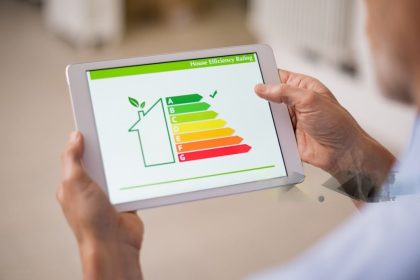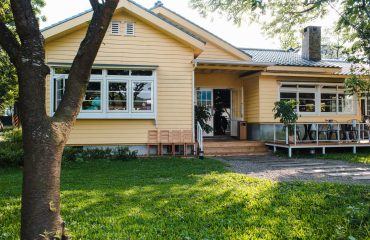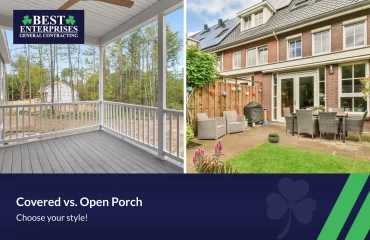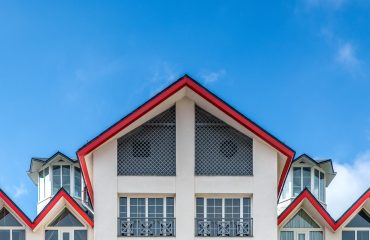
Every element counts in the quest for a more energy-efficient home — from the roof to the foundation and, notably, the siding. Siding does more than just beautify your home; it plays a pivotal role in regulating temperature and protecting against harsh elements. In today’s environmentally conscious world, understanding how siding upgrades can impact your energy bills is more crucial than ever.
As homeowners seek sustainable living while managing costs, the significance of energy efficiency in homes has skyrocketed. Among the myriad strategies to enhance a home’s efficiency, siding upgrades have emerged as a particularly impactful approach. Siding is crucial in maintaining a home’s temperature and protecting it against the elements. This protective shell is instrumental in keeping the interior climate comfortable throughout the year, effectively reducing the need for excessive heating in the winter and cooling in the summer. As such, well-chosen and properly installed siding is about safeguarding the home from weather extremes and significantly contributing to energy savings and sustainability. By understanding and optimizing the performance of your home’s siding, you’re taking a crucial step towards a more energy-efficient, cost-effective, and environmentally friendly living environment.
The Importance of Siding for Energy Efficiency
Siding is the home’s first line of defense, crucial for protecting against the external environment and significantly influencing interior temperature control. This protective barrier is essential for insulation, effectively keeping warm or cool air inside, thereby lessening dependence on heating and cooling systems. Such efficiency assures a comfortable living environment and leads to notable energy savings. Choosing siding material and proper installation is key to maximizing these benefits, highlighting siding’s pivotal role in achieving a more energy-efficient home.
Types of Energy-Efficient Siding Materials
When it comes to siding, not all materials are created equal in terms of energy efficiency. Here’s a brief comparison:
- Vinyl Siding: Affordable and versatile, vinyl siding can be enhanced with insulated backing, significantly improving its thermal efficiency and contributing to energy savings.
- Fiber Cement Siding: Known for its durability and resistance to many forms of damage, fiber cement also offers moderate insulative properties. While not insulating as insulated vinyl, its robustness contributes to long-term energy efficiency.
- Insulated Siding: This category includes materials specifically designed to increase a home’s R-value, such as insulated vinyl siding. These materials offer superior thermal efficiency, directly contributing to substantial energy savings by improving the home’s ability to maintain stable internal temperatures.
Each material offers a different level of thermal efficiency, influencing your home’s energy consumption and costs. For instance, vinyl siding with insulated backing can significantly reduce heat transfer, making it an excellent choice for energy conservation. Fiber cement, while more focused on durability, still offers energy-saving benefits through its inherent insulating properties. With its high R-value, insulated siding is the best option for those prioritizing energy savings, as it directly addresses heat loss and gain.
Choosing the right siding material involves balancing thermal efficiency with other factors such as climate, aesthetic preferences, and budget. However, understanding the energy-saving potential of each option can guide homeowners to make informed decisions that align with their energy efficiency goals.
The Science Behind Energy Savings and Siding Upgrades
The advancement in siding materials and technology plays a significant role in enhancing a home’s energy efficiency. At the heart of this evolution is the scientific approach to improving insulation and air sealing, crucial aspects that directly impact energy savings.
- Improved Insulation: Modern siding materials are engineered with higher R-values, which indicate their insulation effectiveness. The higher the R-value, the better the material resists unwanted heat transfer. This means that heat stays inside the home during winter and outside in summer, reducing the need for heating and cooling systems to work overtime. Materials like insulated vinyl siding are specifically designed to provide this enhanced insulation, incorporating layers of rigid foam insulation that significantly reduce heat transfer.
- Advanced Air Sealing: Modern siding options offer improved air sealing capabilities and insulation. The design and installation techniques have evolved to minimize gaps and leaks where air can enter or escape from the home. This air sealing prevents wind-driven moisture infiltration and maintains controlled indoor air quality and temperature. Properly sealed siding systems reduce energy consumption by ensuring that heated or cooled air remains inside, making heating and cooling systems more efficient and less costly to operate.
This dual focus elevates the home’s thermal performance and supports environmental sustainability by reducing energy use. Opting for siding that integrates these technologies is smart for energy-conscious homeowners.
Real-Life Success Stories
Insulated vinyl siding has emerged as a standout choice for homeowners aiming to enhance their home’s energy efficiency. Such upgrades leverage advanced materials like Neopor® to significantly boost thermal efficiency, slashing energy costs and amplifying indoor comfort.
NEWPRO’s Energy Wall Siding Systems exemplify these benefits, offering up to 19% better R-value, which translates to noticeable energy savings and enhanced living comfort for homeowners. These real-life transformations underline the importance of selecting energy-efficient siding materials.
Visit NEWPRO and Allied Siding & Roofing to learn more about these impactful upgrades and read detailed success stories. These narratives highlight the difference the right siding choices can make in energy efficiency and home performance.
Choose the Right Siding for Your Home
Selecting the right siding involves considering the local climate, your home’s architectural style, and specific energy efficiency goals. It’s also crucial to ensure professional installation, as improper fitting can negate the benefits of high-quality siding materials, leading to potential energy losses.
Conclusion
Upgrading your home’s siding is an aesthetic improvement and a strategic investment toward lower energy bills and a smaller environmental footprint. Choosing the right materials and ensuring professional installation can significantly enhance your home’s energy efficiency.
Ready to transform your home with energy-efficient siding? Visit BestGC to schedule a consultation and explore your siding options. Our experts are dedicated to helping you make informed decisions that align with your energy-saving and home-improvement goals.



